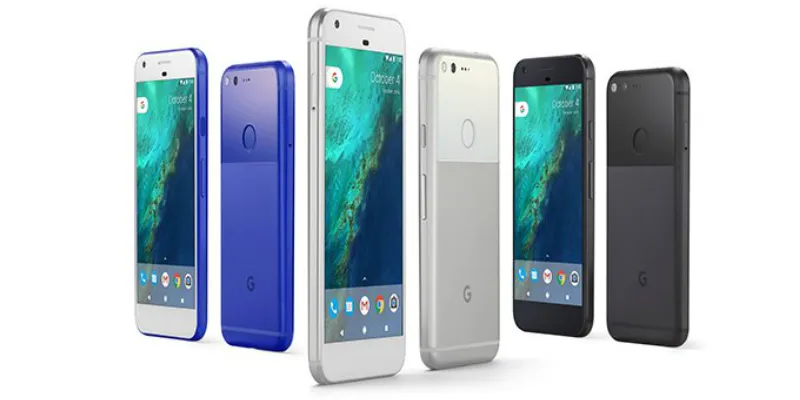Google's Pixel phone is irresistibly Google - and the assistant is fun
I dropped into an electronics shop today to confirm the imminent arrival of the Google Pixel phone. I pulled the device out of my bag and asked them when this phone was due to arrive. Instantly there was a crowd around me and I was virtually mobbed by people wanting to have a look at the phone. I had to quickly retrieve it and beat a hasty retreat before I found myself having to part with Rs 76,000 the next day.

Interest in Google's Pixel phones (the 5-inch Pixel and the 5.5-inch Pixel XL) is quite high, though how many will eventually end up paying the high asking price is another question. I, for one, know that I am beginning to develop a distinct fondness for the Pixel XL and will hand it back with extreme reluctance in a few days.

The Pixel phones have a thoroughly peculiar design. It's not one you can hate, nor is it one you can love. The front is disappointingly like any of the phones around you. The back starts out with one material and then abruptly switches to another as if it changed its mind. That top glossy segment will welcome fingerprints and I don't mean just on the sensor located there. At this point, I have no idea if you will be able to get cases for it, but if you do, how will you experience people asking, “Is that the Google phone?”
Well, it is the Google phone and it's Google right from the start. The familiar logo welcomes you when you first switch it on and after a very quick and painless setup, you will notice that this isn't the usual Android look. What you have on the Pixel phone is the Pixel launcher and Android 7.1 Nougat. It's being said that Google wants to own its hardware and software and integrate the two—as Sundar Pichai explained at the recent Google event, it's important because the formula is getting so much more complex—and the tech giant is doing so just like the other tech giant, Apple.
The Pixel launcher is a minimalistic and simple, clean interface on which you swipe from down to up to get all the apps, which at start are only Google apps. You swipe left to right to find yourself on the Google search page. And you swipe from up to down to get your notifications, like always. But now you can also long-press on an app to get a quick action menu, just like Apple's 3D Touch or for that matter like a right-click on a Windows desktop. And if you long-press the virtual Home button, the Google Assistant pops up in listening mode asking if she can help you with anything.
How smart is she?
The Google Assistant has gone and become a bit of a celebrity as people shoot question after question at her, comparing her with Siri and seeing just how intelligent her artificial intelligence is. I asked if I had any flights coming up and she said yes and showed me which ones. Of course, she knows more about my Gmail than I do, so that's an easy one. I asked her to play me Britney Spears' most popular song, and she did and I was sorry I asked. The assistant will essentially answer all sorts of stuff, from the usual info you get in your Google Now to whatever information you're seeking.

The intelligence promises to kick in when she begins to personalise for each individual and relate knowledge to location and other parameters. You can see what the assistant functions like by downloading Allo messenger. On the Pixel, the assistant's voice is dependent on what you choose — and I promptly got rid of the Indian accented madamji whom I never did take to. The answers come quick and pleasant, making you warm up to all the Googleness even more.
The Pixels' pixels
The Pixel phones are not supposed to be about the hardware, but one bit of hardware is getting a lot of attention. The 12.3MP camera—the same on both versions—is busy being pitted against the camera kings, iPhone 7 Plus and Galaxy S7. Although camera review expert site DXoMark rated the Pixel the highest of any smartphone camera and gave it a score of 89, which no one else has got, most reviewers doing minute comparisons are finding each of the three to be better at the others under some conditions. The iPhone is too warm indoors, the Pixel is faster than the others, the S7 has the widest aperture... In the end, they're all good. The Pixel lights up an image indoors. It is most often vivid or even oversaturated with photos, it's almost always pleasing, and its burst mode sounds like a cat purring; it's that fast.
The Pixels work on Snapdragon 821 with 4GB of RAM and are really fast and fluid not just because of raw hardware but because of the seamless integration with the software on board. This phone is not a dual SIM, for those who thought to separate their personal and work lives, nor does it have spendable memory, though it does have all the space needed for photos and videos to be stored in the cloud, free.

The Pixels have a few variants based on storage on board, but from start to finish they are all unexpectedly expensive. From Rs 57,000 to Rs 76,000, they clearly position themselves against the iPhone. Except that it isn't easy to do that. The years of brilliant marketing Apple has done stands it in good stead years later, but for all intents and purposes, Google's Pixels are new entrants. I'm not counting the Nexus phones, which had a different purpose and audience. Even in the US these phones are considered expensive -- India is obviously a far cry from just taking these prices in their stride. We will have to wait and see what happens.
(Disclaimer: The views and opinions expressed in this article are those of the author and do not necessarily reflect the views of YourStory.)






